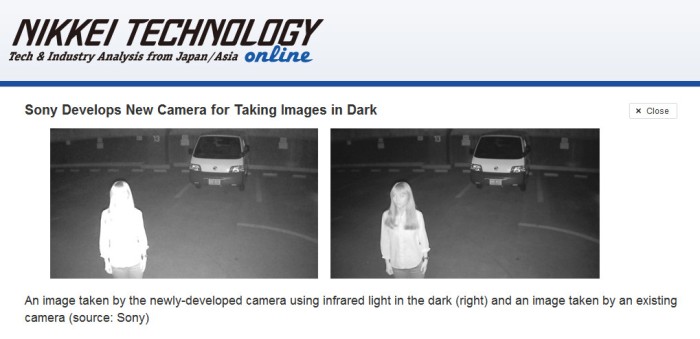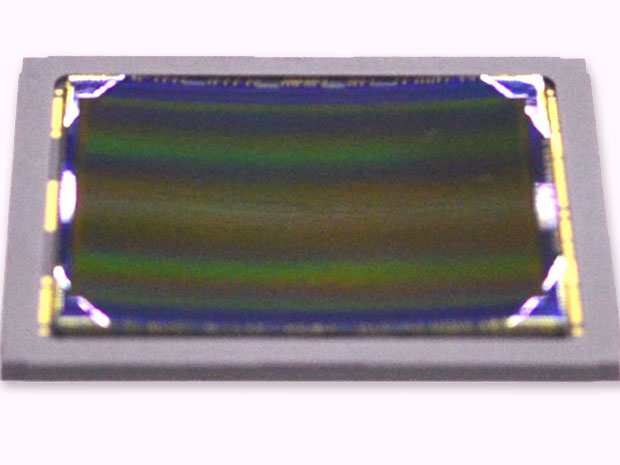Sony Develops a New Generation BSI Sensor with 10x Greater Sensitivity
Japanese multinational conglomerate Sony Corporation is known for its leading imaging products. It is responsible for producing the RX100, the digital camera hailed by Time magazine as the invention of the year in 2012. Now, the company has developed a new camera sensor that promises dramatically higher light sensitivity. This was first reported on Nikkei, claiming that the new BSI CMOS sensor will offer ten times greater sensitivity compared to the last generation of BSI sensors from Sony.
BSI – An Overview
BSI is an acronym for back-illuminated or backside illumination. It is a type of digital image sensor that makes use of a nontraditional arrangement of imaging elements to enhance light sensitivity or improve the sensor’s ability to capture light. It is notable for its better performance in low light conditions. Traditionally, digital image sensors are designed in a way that is comparable to the arrangement of elements in the human eye. This means that there is a lens in the frontmost part, wiring in middle, and the photodetector located at the back. For BSI sensors, however, the arrangement is different—the photodetector is located in front of the wiring.
The rearrangement of the imaging elements in a BSI sensor makes it capture more than 90% of the photos that get through the lens, around 30% more than what a traditional sensor is capable of doing. Some may wonder how this improvement is achieved considering that it does not appear to be in coherence with the idea that biomimicry is the best way for improving technology (since the traditional sensor imaging element arrangement is based on the human eye). It’s worth pointing out, however, that the BSI sensor arrangement is also a form of biomimicry. The only difference is that it is mimicking a cephalopod’s eye instead of a human’s or vertebrate animal’s.
Sony – The BSI Sensor Leader
Sony is currently the world leader in the production of BSI sensors. It supplies BSI sensors, particularly those used in smartphones, to a big majority of device manufacturers worldwide. The company’s new sensor, however, is not (at least for now) intended for mobile devices.
As reported on Nikkei Technology, Sony created three types of network cameras for taking images in the dark. The camera manufacturing juggernaut produced a series of new network cameras that are impressively capable of capturing usable enough images in zero lux scenarios. These cameras, in other words, are usable in the dark.
New Sensor and Camera Capabilities
Take note that the “zero lux” scenario mentioned above refers to the cameras, not the sensor. Sony’s new sensor will not be able to capture any useful image at 0 lux but will work at the lowest illuminance of 0.05 lux. This is 10 times the 0.5 lux lowest illuminance capability of Sony’s current crop of BSI sensors.
The new cameras developed by Sony are able to capture images in total darkness because of infrared light. The cameras automatically emit infrared light when it’s too dark to proceed to night vision ode. The infrared light beamed by the cameras has a range of around 30 meters. These cameras then capture monochrome or black and white images. Obviously, they can only manage to capture in black and white because the absence of light means that colors are indistinguishable. Infrared light is not the type of light that can illuminate an area and bounce back light with different colors regardless of the color of the subject being captured.
Additionally, Sony’s new cameras also come with a white LED lamp and motion sensor to facilitate the taking of color photos. This white LED lamp is triggered when it’s dark and when there is motion detected.
Sony’s achievements in camera technology are worth noting. The company has been offering a good range of topnotch cameras for recreational and professional uses. It is also the leading supplier of camera sensors for smartphones worldwide. It’s just unfortunate that until now it continues to struggle on the financial aspect. Sony deserves more business success to be able to deliver more quality products and innovations. Just recently, Sony announced its development of the innovative curved camera sensor that is expected to provide a good deal of imaging benefits. It’d be a waste to see this company fall despite its innovations and technological achievements.

![By Bautsch (Own work) [CC0], via Wikimedia Commons](https://techtheday.com/wp-content/uploads/2014/03/color-camera-sensor.png)
